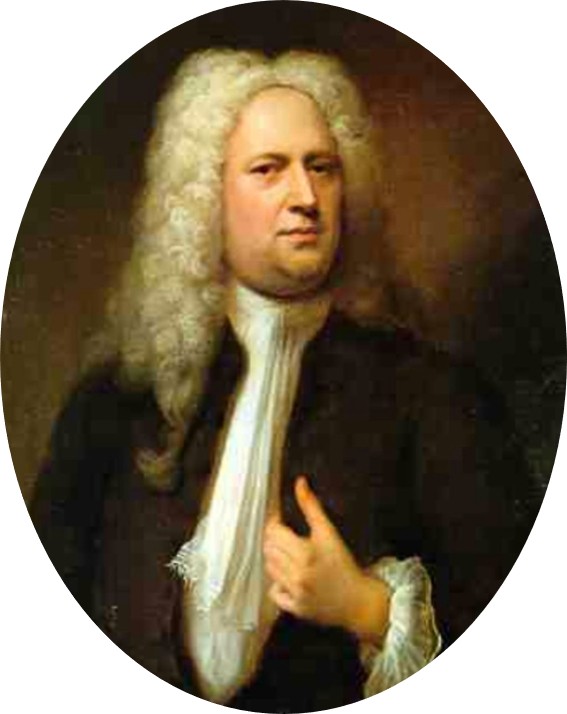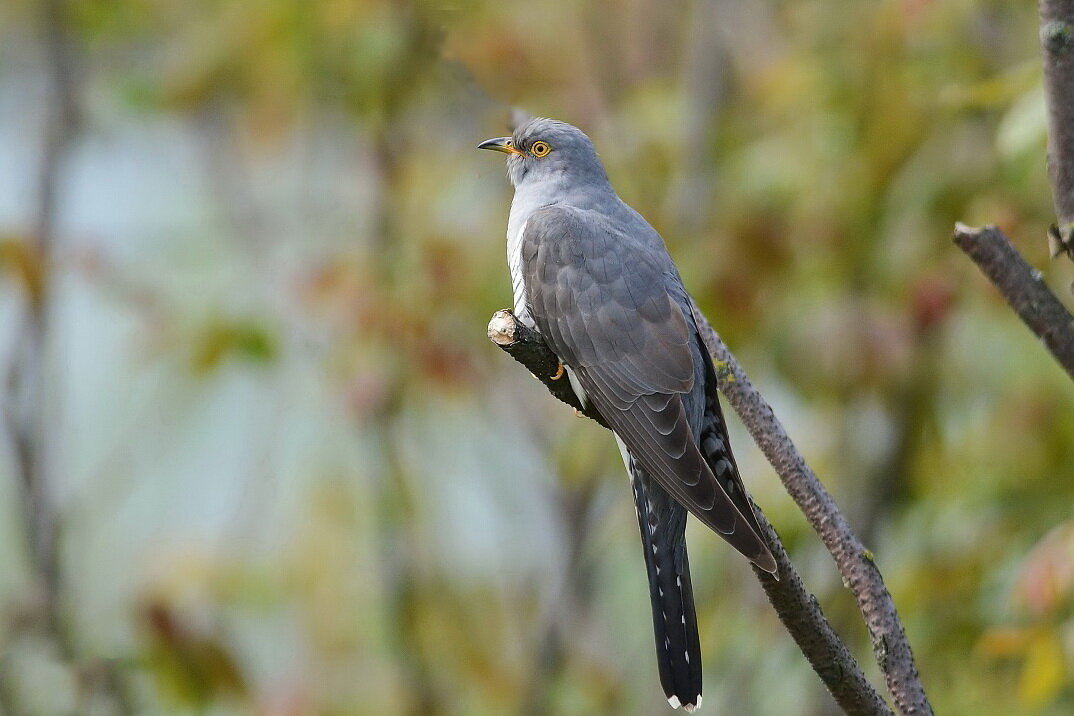Fans of Wolfgang Amadeus Mozart will likely be aware that he was taught, shaped, and influenced by his father Leopold Mozart, a violinist and composer. When Leopold began to teach his seven-year-old daughter Nannerl, in 1759, he discovered that Wolfgang could imitate anything his sister played on the keyboard. Leopold began teaching the little boy, and in no time, Wolfgang made astonishing progress. Leopold, deciding the children’s exceptional talents had to be shown off, organized extensive concert tours of the continent, and the children impressed and amazed kings and queens with their music making.

Leopold Mozart © stringsmagazine.com
Wolfgang met many illustrious musicians while traveling in Europe and encountered the music of George Frideric Handel, Johann Sebastian Bach, Joseph Haydn, and Johann Christian Bach. Wolfgang’s friendship and musical kinship with Johann Christian (J.C.) Bach became pivotal.
Both Wolfgang Amadeus Mozart and Johann Christian Bach, were sons of famous musicians. J.C., the youngest son of Johann Sebastian Bach, was born in Leipzig. The elder Bach was by then fifty years old and in 1750, when J.C. was a young teenager, Johann Sebastian passed away. J.C. traveled to Berlin to live with his older brother and to further his studies in composition and on the keyboard with him, the eminent composer Carl Philipp Emanuel Bach. Johann Christian soon developed into an accomplished performer and composer in his own right. He began to travel widely, eventually settling in Italy.
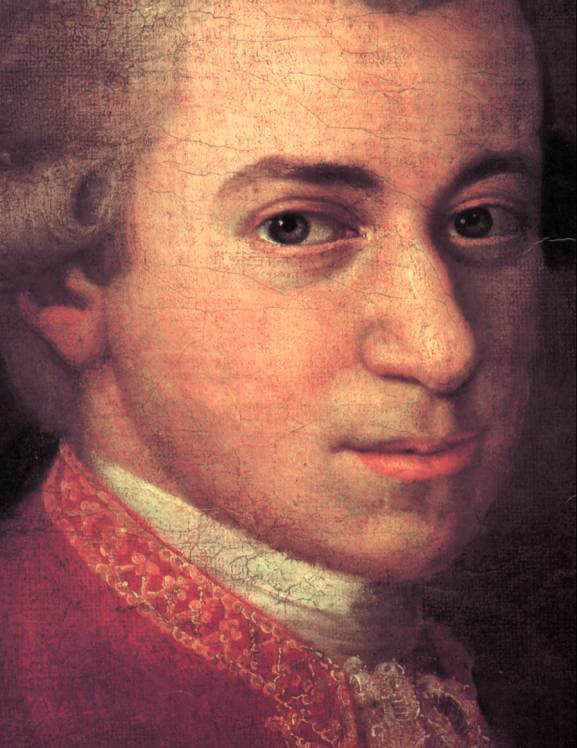
Portrait of Mozart by Johann Nepomuk della Croce
Captivated by the new musical style he heard in the operatic music there—lyrical, charming, and effortless that shied away from the serious counterpoint of baroque music, J.C. began perfecting Stile galant. It was the music of the future, which introduced simple, graceful phrases that highlighted the melody. Johann Christian’s successful first operas were composed in this elegant style.
Appointed to the position of Music Master to Queen Charlotte, he moved to London in 1762. His reputation increased after writing several successful operas. In 1764 “The English Bach” met and mentored the young eight-year-old Wolfgang and the two enjoyed improvising on the harpsichord. Nannerl, Mozart’s sister, wrote in her letters that Bach would sit Mozart in front of him at the keyboard. J.C. played one bar, then Mozart would elaborate on the next bar, ‘and in this way they played a whole sonata, and someone not seeing it would have thought that only one man was playing’.
Mozart’s predilection for wind instruments originates with J.C Bach. The latter thought the winds should be featured; they should carry the melody and not simply double melodic lines. In fact, J.C. Bach’s earliest opera was the first to include clarinets.

Portrait of Johann Christian Bach in 1776 by Thomas Gainsborough ©
Bach’s keyboard style also greatly influenced Mozart. Naturally Mozart and his sister played keyboard duets throughout their childhood, and Mozart’s sparkling and enchanting compositions for piano four hands and for two pianos will always be celebrated. Piano duos or works for piano four hands are performed on one piano and differ from compositions that are written specifically for two pianos. Mozart wrote his Fugue in C minor K. 426, and his Sonatas in D major K. 448 and in C major K. 545 for two pianos, and many other composers from Ravel to Liszt, and Brahms to Rachmaninoff followed suit.
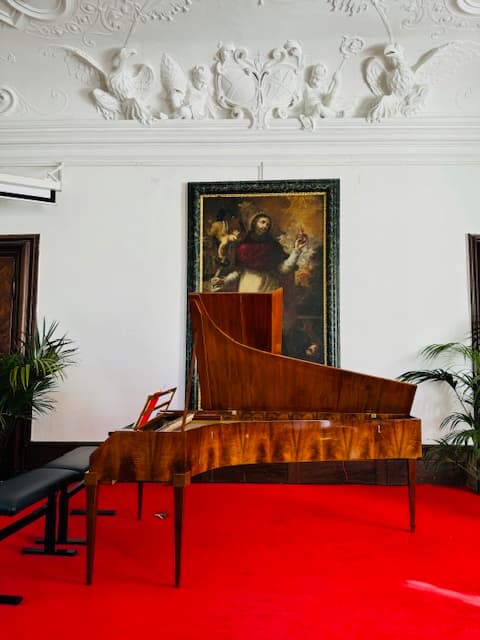
At the Duo Pleyel concert
It was enlightening to hear the two composers, Mozart and J.C. Bach, juxtaposed, and to hear Bach’s influence firsthand in a recent concert by Duo Pleyel in Austria at the spectacular 12th century abbey Klosterneuburg, in Augustinus Hall. Pianists Alexandra Nepomnyashchaya and Richard Egarr presented a program entitled “Mozart’s Real Musical Father” that alternated Piano Duets by W. A. Mozart and those by J.C. Bach. They performed on a replica of Chopin’s preferred piano, a Pleyel built in 1848.
The duo opened the concert with the Mozart Sonata for Piano 4 Hands in D Major, K. 381. I think you’ll agree the first movement Allegro could not be more beguiling. Within the movement the interlocking melodies alternate from the major and minor key effortlessly, moving from charm to mystery, and from affecting to poignant.
Wolfgang Amadeus Mozart: Sonata for Piano 4 Hands in D Major, K. 381 – I. Allegro (Bart van Oort, piano; Ursula Dütschler, piano)

Stift Klosterneuburg
A delightful duo by Johann Christian Bach followed, the Sonata for Piano Duet in A major Op. 18, No. 5. The duo is only two movements. The allegretto is expressive and lyrical, with the two pianos evenly matched singing through beautiful scale passages and ornaments, certainly an example of Stile galant and the compositional style Mozart would emulate.
J.C. Bach: Duet in A Major, Op. 18, No. 5, W. A19 – I. Allegretto (Duo Pleyel)
Mozart’s Five Variations in G Major for Piano Duet, K. 501 was next on the program. Mozart’s wizardry in this brief work of only 7 minutes, is riveting. He highlights and embellishes the initial enchanting melody first in eight notes, then in triplets in the lower piano line, then in sinuous sixteenth notes in the higher register. It’s followed by a slow and weightier variation in the minor key. More virtuosic flourishes follow before the simple version from the introduction returns towards the end and fades out gracefully. It’s masterful.
Wolfgang Amadeus Mozart: 5 Variations in G Major for Piano Duet, K. 501 (Bart van Oort, piano; Ursula Dütschler, piano)
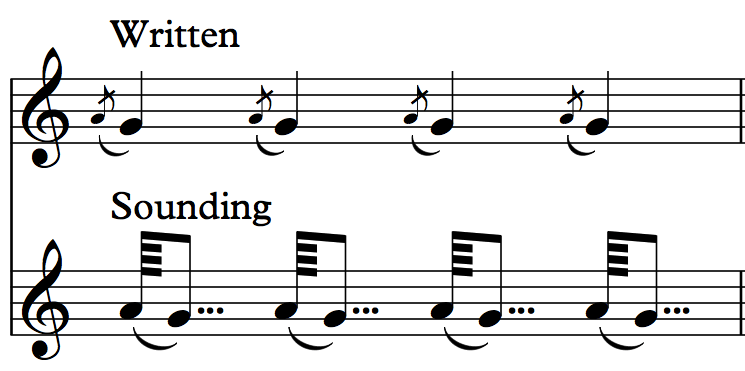
Acciacatura
The Sonata for Piano 4 Hands in F Major, K. 497 by Mozart begins with an exquisite Adagio before it embarks on a lighthearted Allegro di molto. What could be more beautiful than this opening? Mozart composes with such brilliant panache. Listen for the acciaccaturas – grace notes played as quicky as possible before the main note with the emphasis on the main note, as if little birds are chirping—as well as the speedy turns—a four-note pattern where the main note is played, then the note above, followed by the main note again, and then the note below, and is notated by a sideways ‘S’ symbol.
Wolfgang Amadeus Mozart: Sonata for Piano 4 Hands in F Major, K. 497 – I. Adagio – Allegro di molto (Piano Duo Danhel-Kolb)
J.C. Bach Sonata for Piano Duet in F Op. 18, No. 6 followed, a work of only two movements, an Allegro, and a Rondeau-Allegro, which is an animated movement featuring unison playing and short cadenzas. One can hear many similarities in style that Mozart later adopted and perfected.
J.C. Bach: Duet in F Major, Op. 18, No. 6, W. A20 – II. Rondeau. Allegro (Duo Pleyel)
The concluding piece on the program, W.A. Mozart Sonata for Piano Duet in B-flat, K 358, begins with a lively and vivacious Allegro that highlights scales and unison passages in each of the two parts.
The third movement, a captivating Molto presto, features long passages of repeated notes, light and quick staccato notes, sparkling ornaments, rhythmic accents on the offbeats, low register bombast, all in merely three minutes. It must be so much fun to play, and lovely to listen to.
Wolfgang Amadeus Mozart: Sonata for Piano 4 Hands in B-Flat Major, K. 358 – I. Allegro (Duo Pleyel)
Wolfgang Amadeus Mozart: Sonata for Piano 4 Hands in B-Flat Major, K. 358 – III. Molto presto (Duo Pleyel)
To hear these piano duos and to see the parallels between the composers in this most enjoyable program was illuminating, and evidence of the musical kinship between J.C. Bach and W. A. Mozart.
For more of the best in classical music, sign up for our E-Newsletter

